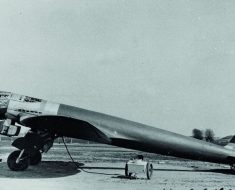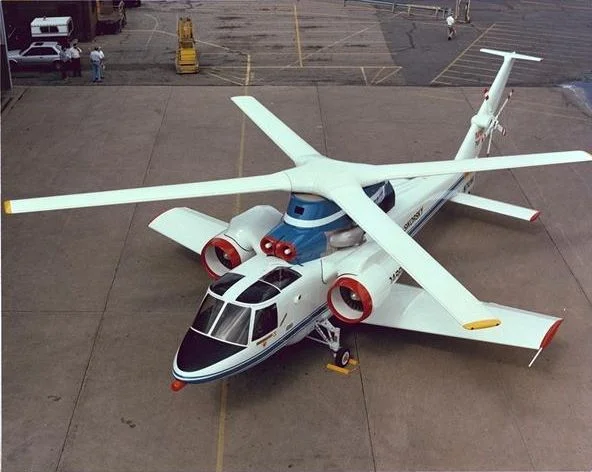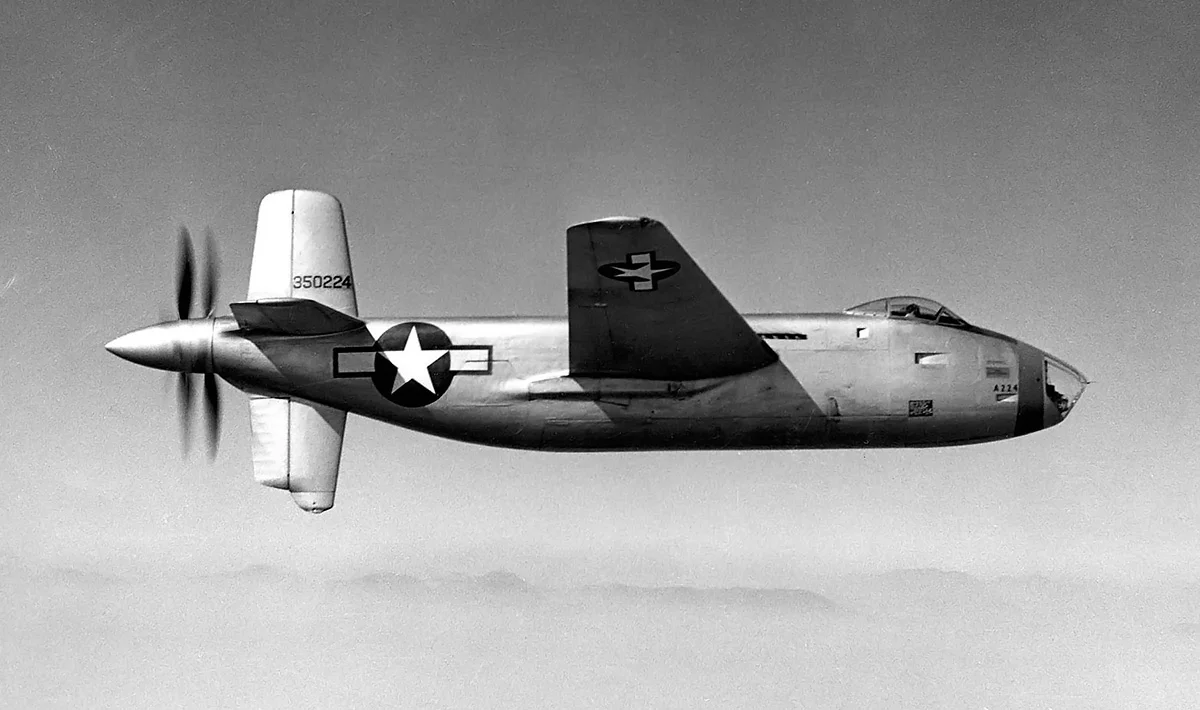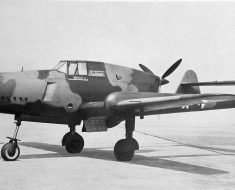The Sud-Ouest Triton design process began covertly as early as 1943, within France during the period of German occupation.
Following the end of World War II in 1945, the French aviation industry faced significant challenges in rebuilding. Amidst these struggles, it launched its first venture into jet-powered aviation with the Sud-Ouest SO 6000 “Triton,” a two-seater experimental trainer.
The aircraft proved effective in trials and data collection, playing a crucial role in advancing French interest in jet technology. This progress was achieved despite France lagging behind the advancements already made by its counterparts in Britain, the United States, and the Soviet Union.
The development of the SO 6000 started clandestinely as early as 1943, during the German occupation of France. The design envisioned a single-engine, stressed metal skin monoplane. Its turbojet engine, distinct from early post-war jet designs, was integrated within the fuselage rather than in external nacelles.
This design also featured a unique side-by-side seating arrangement for its two-person crew. Additionally, the aircraft incorporated a tricycle landing gear and was planned to include ejection seats.
Contents
Requirements
The Sud-Ouest SO.6000 Triton, a pioneering French experimental jet aircraft, emerged as the nation’s first domestically designed and manufactured jet-powered aircraft in the 1940s. This achievement was realized by the French aircraft consortium SNCASO.

The project was initiated covertly during World War II, utilizing research acquired from Nazi Germany. Shortly after the war’s end, the French government commissioned the development of five prototype jets by local industry.
Due to challenges with the homegrown Rateau-Anxionnaz GTS-65 turbojet engine, the decision was made to employ the German-engineered Junkers Jumo 004-B2 engine, with the British Rolls-Royce Nene turbojet also being used for some prototypes.
Read More: XF-103 – America’s Interceptor That Never Was
The maiden flight of the first prototype occurred on 11 November 1946, piloted by Daniel Rastel. This event marked a significant and public milestone for French industrial and military progress.
In total, five aircraft were built for testing purposes, one of which was solely for static trials. Despite the successful construction and operation of these aircraft, the SO.6000’s development ceased as more advanced jet fighters rapidly entered the scene.
Sud-Ouest Triton Historian
Aviation expert Peter Caygill notes that France’s aviation industry was severely impacted by World War II, possibly more so than any other nation. Despite this, French industrialists and government officials were eager to rapidly advance in aviation technology.
They aimed not just to restore the nation’s aviation prowess but also to leverage the latest innovations and create a new wave of competitive, domestically-produced aircraft. The capture of German high-speed research during the war significantly fueled France’s pursuit of cutting-edge aviation projects.

One of the earliest post-war aviation endeavors in France was the Sud-Ouest Triton. Aviation historian John W.R. Taylor traces the project’s roots back to 1943. It is believed to have originated from a secret research program conducted under German occupation, led by French aeronautical engineer Lucien Servanty.
Read More: The Stipa-Caproni Was a Flying Barrel
Following the war, the new French government issued a directive for the construction of five prototype aircraft for testing. The development of homegrown jet aircraft was deemed crucial by the government, representing a swift resurgence of France’s industrial and military might.
Sud-Ouest Triton – SO.6000
The SO.6000, while incorporating jet propulsion, was in many ways a traditional aircraft. It featured a compact, unarmed two-seat design with a deep fuselage and a mid-mounted straight wing. The fuselage’s size allowed for easy adaptation to various engine types.
Peter Caygill noted that SNCASO had to begin from the ground up with the fuselage design. By adopting a fresh, clean-sheet approach and the innovation it encouraged, the SO.6000 avoided much of the conservatism seen in contemporary British aircraft designs.

Initially intended to be jet-powered, securing a suitable engine for the SO.6000 was a complex issue. The original plan was to equip it with a French-made Rateau-Anxionnaz GTS-65 turbojet engine. However, due to developmental delays with this engine, the decision was made to use the German-designed Junkers Jumo 004-B2 engine in the first prototype. Opting for a German engine was seen as a practical solution to prevent any further delays in the project.
First Flight
On 11 November 1946, amidst challenging weather conditions, the first prototype of the SO.6000 took to the skies for its inaugural flight, piloted by Daniel Rastel. This flight was strategically timed to precede an international aviation exhibition at the Grand Palais by just four days.
Read More: Junkers Ju 288 the Bomber the USA Wanted
The French government aimed to showcase their technological prowess, positioning themselves on par with Germany, the United Kingdom, and the United States.

Peter Caygill pointed out that the Junkers engine, with a maximum thrust of 1,980 lb, was relatively underpowered for the SO.6000, barely enabling sustained flight and thus lacking in practicality. Subsequent prototypes would not use the Junkers engine.
The second prototype was allocated for static tests, while the remaining three were equipped with a licensed version of the British Rolls-Royce Nene turbojet engine. The last of these conducted its first flight in November 1950.
Speeds of 593 mph
None of the prototypes were powered by the originally intended GTS-65 engine, whose development was eventually halted without any production models completed. Equipped with the Nene engine, the SO.6000 could reach speeds up to 593 mph, but faced various vibration and stability issues at these high speeds.
Read More: The Saunders-Roe SR.A/1 Was a Pioneering Seaplane Jet
Lucien Servanty, the SO.6000’s chief designer, also contributed to the Sud-Ouest Espadon, France’s first post-war jet fighter, and was involved in designing numerous other aircraft, including the iconic Anglo-French supersonic airliner, the Concorde.

However, the SO.6000 project was discontinued in the early 1950s without any direct successors. The aircraft became obsolete due to the swift advancements in jet propulsion and broader aerospace technologies, with many jet-powered designs emerging around the same period. Consequently, the SO.6000 never saw operational use.
Sud-Ouest Triton – Six Versions
All six versions of the SO 6000 aircraft were completed. The first prototype, notable for being the first French aircraft to fly with jet propulsion, had a brief career with only eight flights before being retired in 1947. The second prototype remained grounded, as it was awaiting a French turbojet engine that never materialized.
Read More: BV 141 – The Asymmetrical Aircraft
The third prototype, equipped with a powered ejection seat unlike the first two, only took to the skies twice. The fourth prototype had the most extensive flight record, achieving 189 flights. The fifth prototype was flown just eight times before its retirement, and the sixth never moved beyond its role as a static testbed.
Today, Prototype 03 is preserved as a valued exhibit at the Musée de l’Air et de l’Espace at Le Bourget Airport in Paris. During its operational life, the Triton achieved a maximum speed of 593 miles per hour and reached a service ceiling of 39,375 feet.







